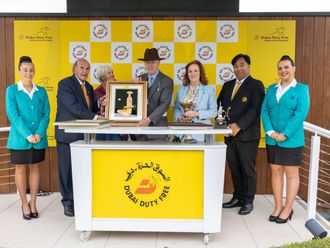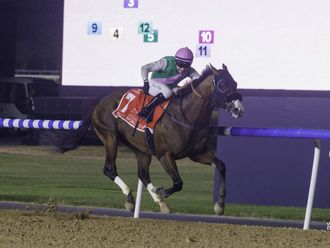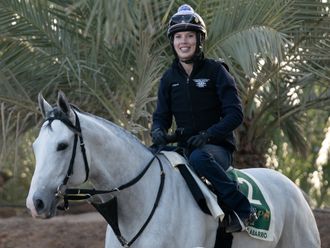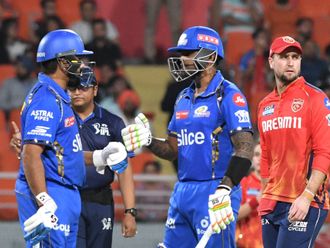
Your suit is pressed, your hat looks fabulous, you enter the venue, glance at the racecard, and it looks as familiar as the periodic table. This is a scenario faced by hundreds of racegoers annually.
While your copy of the Dubai World Cup Quick Guide helps you with all aspects relating to the event, reading racecards can be slightly confusing.
First, the number below the jersey icon is the horse’s saddlecloth number for the race and the small number in brackets next to the saddlecloth number is the stall number that the horse will start from.
The saddlecloth and stall numbers are usually the same in big races, but it can vary.
Second, the suffix in brackets after the name tells you where the horse was bred. FR, for instance, indicates breeding in France.
The next part details the horse’s age, colour and sex. The most common colours are B, Br or Bay (brown); Bl (black); Ch (chestnut); and Gr (grey/white). The sexes are C (colt); F (filly); M (mare, a filly aged 5+); H (horse, a colt aged 5+); and G (gelding, a castrated male).
After that comes the details that include the horse’s official rating, owner’s name, trainer and jockey along with the weight (jockey plus saddle) carried by the horse.
For more on abbreviations and racing terminology, visit the Emirates Racing Authority at www.emiratesracing.com












